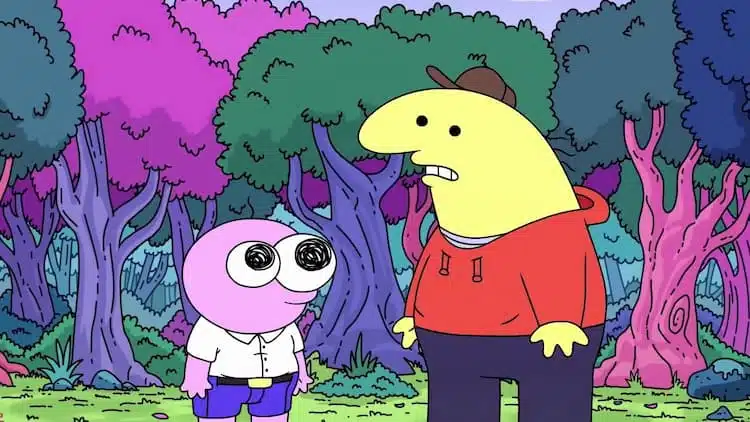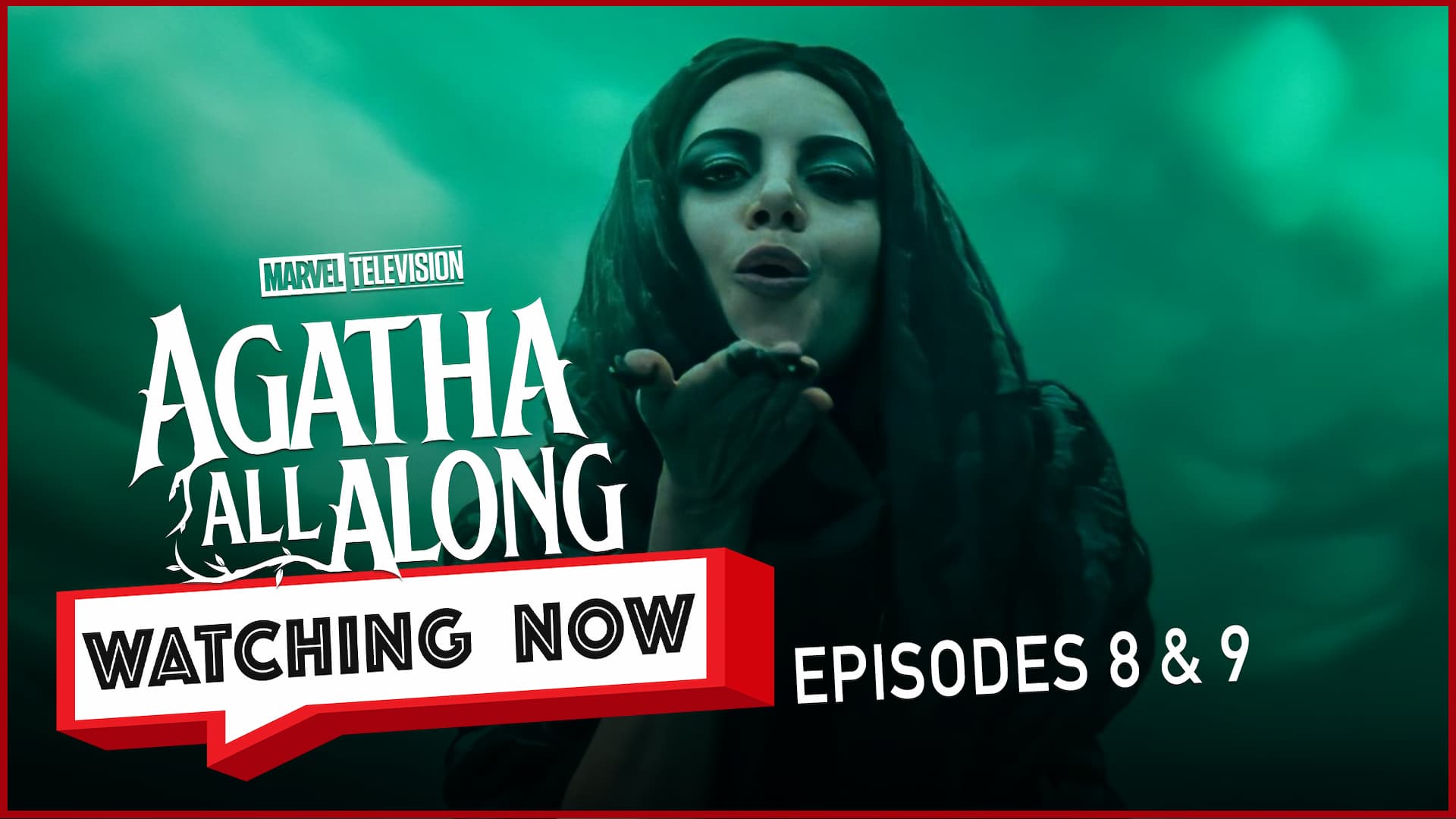
If you get any amount of animation in your feed, you’ve likely seen a duo of one yellow and one purple cartoon character going around and making people smile. Should you be a fan of adult swim, then the nasally and over-polite voices of Charlie and Pim, respectively, have certainly graced your ears on more than one occasion. The show Smiling Friends has been gaining traction with its wild sense of awkward and disturbing humor, and its season two finale hitting screens.

While all the niche references and hilarious line deliveries did captivate me, I had one thought almost immediately, “Wow, this is like Amazing World of Gumball for adults.” Now, I know that sounds a bit crazy, but bear with me as I guide you along the red twine webbing my conspiracy corkboard.

Before making this comparison, a quick refresher is in order. Amazing World of Gumball is a Cartoon Network show following brothers Gumball and Darwin Watterson as they go through the changes and relationships of middle school; oh, and by the way, they’re a blue cat and orange fish, respectively. The Amazing World of Gumball’s humor largely comes from its foolish main characters egging on simple situations or constructing conflict continuously like a carousel of chaos encircling a city. Alliteration aside, the show sports a lively cast of characters that make the city of Elmore feel like it is lived in.

Now, I know it’s in poor taste, but I enjoy fast food from time to time, so I’m gonna judge these two books by their very similar covers. Both shows have extremely disjointed animation styles. Charlie and Pim frequently meet characters animated in entirely different mediums or even just filmed live due to the numerous cameos by a variety of smaller Youtubers on the show such as Hoolopee, Joel Haver, and Nostalgia Critic. Gumball and Darwin similarly look nothing like any other character except their family since the show’s creator, Ben Bocquelet, had originally pitched it as a show about a school for poorly behaved cartoon characters that used all his previous failed projects and commercials.

The multimedia approach of both shows also serves a similar purpose for the comedy. Some of the best moments from both shows come from awkward everyday interactions that any common viewer could have experienced. Small misunderstandings and cringe realizations, such as forgetting to book hotels and embarrassing internet search histories pepper both Smiling Friends and Amazing World of Gumball. The “throw everything at the wall” style of each show contrasts the quotidian quests of quantifiably quaint quotas that each and every character experiences, just as we do.
At this point, you may be aggressively gesturing at your screen and asking, no pleading, “How can they be similar when one is on Adult Swim and has so many mature jokes, while the other is on Cartoon Network and made for children?” Unclench your fists and use your inside voice, please, because there is one final branch to this theory. First off, Amazing World of Gumball is not entirely innocent. Many jokes and episode themes are entirely based on innuendo and layered meaning. Secondly, Smiling Friends could absolutely appeal to unsupervised children who turn on Adult Swim at 3 in the morning.

Appeal can be an extremely gray area, even more so when considering how new Smiling Friends is compared to Amazing World of Gumball. It is this veteran status that actually seals the deal on the comparison. Amazing World of Gumball is rated TV-Y7, meaning it is meant for children seven and up. The show came out in 2011, meaning that the audience is now around 20 years old or older (sorry, I should’ve warned you about suddenly feeling old). A 13-year age gap, while marginal, is enough for any younger fan of Amazing World of Gumball to go through significant life changes, i.e., grow up.
Now that my biggest stretch is out of the way, how crazy is this comparison really? Both shows have multimedia animation, awkward real-life moments contrasting it, and a time gap between debuts large enough for many fans to transition from one to the other. One may be louder, the other may be cuter, but the out-of-place feeling every character has about them appeals to extremely similar people.
What do you think? Are these shows creative cousins at all? What other animated shows should we cover? Let us know in the comments below.



